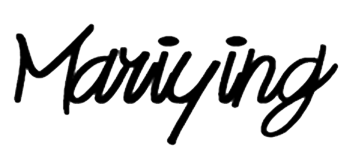Unlock Your Potential with Memory Journaling: Tips and Systems
Journaling can be a transformative practice, offering insights into your emotions, thoughts, and patterns over time. But how can you make your journal entries more meaningful when it’s time to reflect? One effective approach is to create a **Memory Journal** that incorporates a structured system for tracking themes and identifying patterns in your life. Whether you’re new to journaling or looking to refine your practice, this guide will help you establish a system that aligns with your visual and reflective needs.
What is a Memory Journal?
A **Memory Journal** is more than just a daily diary—it’s a tool for documenting your experiences and analyzing them later. By organizing your entries with themes, color tagging, or reflective summaries, you create a roadmap for self-discovery and growth. This method not only makes journaling enjoyable but also ensures your insights are actionable and easy to review.
Why Use a System for Your Memory Journal?
Without a system, reviewing past entries can feel overwhelming. Incorporating strategies like color tagging, mood trackers, and keywords makes it easier to identify recurring themes and patterns. These systems help you:
- Visualize your emotional and mental journey.
- Spot trends in your habits and behaviors.
- Gain actionable insights from your reflections.
Tips to Create a Structured Memory Journal
1. Use a Color Tagging System
Assigning colors to themes or emotions adds a visual layer to your journal. For example:
- Blue: Calm or reflective days
- Yellow: Happy or successful moments
- Red: Stressful or challenging events
- Green: Growth or learning experiences
Use highlighters, pens, or sticky tabs to tag entries after writing. Over time, flipping through your journal will reveal patterns at a glance.
2. Include Monthly Reflection Pages
At the end of each month, dedicate a page to summarizing key events, emotions, and themes. Use sections like:
- Key Moments: Highlight significant events.
- Emotions: Note your most common feelings.
- Themes: Identify recurring patterns.
- Goals: Set intentions for the upcoming month.
3. Track Moods and Themes
Design a simple mood or theme tracker. Create a grid with rows for emotions or activities and columns for days of the month. Fill in the grid daily with colors or symbols to represent your experience.
4. Use Keywords and Indexing
At the bottom of each entry, write 1-3 keywords summarizing the day. For example:
- "Work, Success, Energy"
- "Relaxation, Family, Gratefulness"
Over time, compile these keywords into an index, making it easier to locate and review entries related to specific topics.
How to Reflect on Your Memory Journal
When it’s time to review your Memory Journal, focus on identifying patterns and insights. Use tools like visual mood trackers or reflection pages to guide your analysis. You’ll likely notice themes emerging that you can apply to personal growth and decision-making.
Q&A: Common Questions About Memory Journaling
Q: How often should I update my Memory Journal?
A: Consistency is key. Daily entries are ideal, but weekly reflections can work if you prefer.
Q: What if I skip a day or forget to track?
A: Don’t stress! Journaling is a forgiving practice. Simply pick up where you left off.
Q: Can I use digital tools instead of a physical journal?
A: Absolutely! Apps like Notion or Daylio offer great options for tracking themes and patterns digitally.
Ready to start your own journaling journey? Explore our collection of premium **Memory Journals** to find the perfect companion for your reflections. Visit our store now and begin documenting your story today!
